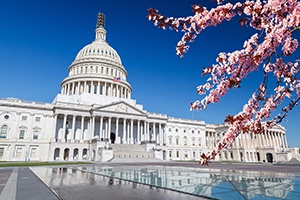 The U.S. Department of Labor's (DOL) announced their final regulations modifying the Association Health Plan (AHP) rules to expand availability to more employers and to make them more affordable by eliminating certain coverage requirements applicable to qualified health plans under the Affordable Care Act (ACA).
The U.S. Department of Labor's (DOL) announced their final regulations modifying the Association Health Plan (AHP) rules to expand availability to more employers and to make them more affordable by eliminating certain coverage requirements applicable to qualified health plans under the Affordable Care Act (ACA).
What Does This Mean?
- It is easier for small employers to join together to purchase health insurance.
- Better access to affordable, high-quality, health insurance coverage.
- Expansion of current guidance to allow more employers to work together and sponsor AHPs that are treated as single plans under Employee Retirement Income Security Act (ERISA).
Who Is Eligible?
- The final rule reduces the "working owner" hours worked criteria to 20 hours per week or 80 hours per month and permits aggregation of hours worked to be consistent with the principles of the "gig" economy and incorporates the definitions of wages and self-employment income from the Internal Revenue Code.
- The DOL eliminated the provision of the proposed rule that an individual would not be considered a working owner if the individual had access to any subsidized group health plan (through a spouse or other employer) because the other coverage may not be as affordable as the AHP.
- The AHP's own employees may participate (even if not in the industry of the group).
- The preamble includes assurances that the mere participation in an AHP shall not give rise to joint employer status under any federal or state law, rule, or regulation.
Additional Requirements for AHPs
To distinguish single plan AHPs from commercial insurance-type arrangements, the final rule requires AHPs to satisfy the following conditions:
- The primary purpose of the group or association may be to offer and provide health coverage to its employee members; however, the group or association also must have at least one substantial business purpose unrelated to offering and providing health coverage or other employee benefits to its members.
- Each employer member of the group or association participating in the group health plan must be the employer of at least one employee who is a plan participant.
- The group or association has a formal organizational structure with a governing body and has bylaws or other similar indications of formality.
- The group or association’s member employers control its functions and activities, including the establishment and maintenance of the group health plan.
- Only employees and former employees of the current employer members (and family members of those employees and former employees) may participate in the group health plan sponsored by the association.
- The group or association is not a health insurance issuer (or owned or controlled by an issuer or by a subsidiary or affiliate of an issuer).
Important Dates
The final rule includes a phased applicability date and allows fully insured plans to begin operating under the new rule on Sept. 1, 2018. Existing self-insured AHPs can begin operating under the new rule on Jan. 1, 2019, and new self-insured AHPs can begin on April 1, 2019. According to the DOL, this phased approach will provide prompt relief to individuals seeking affordable health coverage through AHPs while allotting some additional time for the DOL and state authorities to address concerns about self-insured AHPs’ vulnerability to financial mismanagement and abuse.




